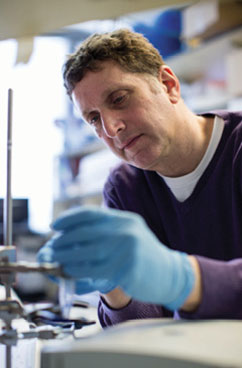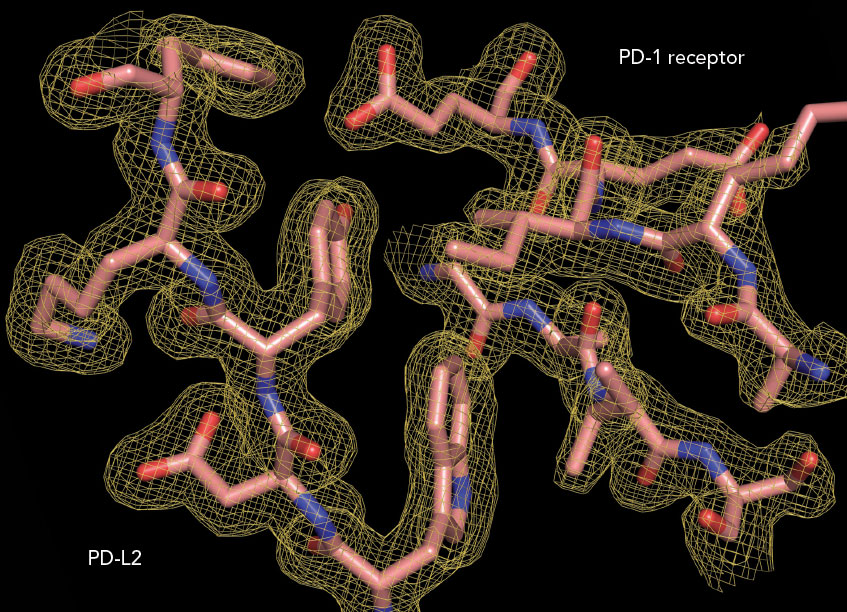
Error: No layouts found

Steven C. Almo, Ph.D.
“If we could remove the brakes on the immune response by inactivating CTLA-4 or PD-1, that would enable T cells to mount a much more robust immune response against these cells,” explains Dr. Almo. “Conversely, you could treat autoimmune diseases by boosting the activity of those two receptors, since that would tamp down T-cell activity.”
To attain those goals, Dr. Almo uses high-resolution X-ray crystallography—an imaging technique in which an X-ray beam is shot through purified, crystallized proteins. The beam is scattered, or diffracted, in many different directions, allowing scientists to construct a detailed, 3-D model of the crystallized protein’s molecular structure. Measuring the intensities and angles of the diffracted beams reveals the position of each individual atom in the protein.
Dr. Almo and colleagues have used X-ray crystallography to determine the precise shape of key molecular complexes: those formed when PD-L1 and PD-L2 (proteins expressed on the surface of tumor cells) muffle the immune response by binding to PD-1 receptors on T cells. “Based on that structural analysis, our lab is engaged in an exciting project,” says Dr. Almo. “We’ve developed a range of molecular variants of the PD-1 receptor that have much higher affinity for tumors’ PD-L1 and PD-L2 proteins than the naturally occurring PD-1 protein does.”
The goal, says Dr. Almo, is for these PD-1 receptor variants to bind strongly to the PD-L1 and PD-L2 proteins of the tumor, rendering them unable to bind PD-1 receptors on T cells. This would prevent the T cells’ brakes from being activated and greatly bolster the immune response. “We’re now testing these PD-1 variants in mouse models of malignant melanoma and metastatic cancers, with the aim of finding new and more-effective treatments,” he says.
Ideally, Dr. Almo’s research will lead to new immunotherapies—not only against cancers but also for treating autoimmune diseases and infections caused by microbes resistant even to the most powerful antibiotics. This work will soon be occurring in Einstein’s Center for Experimental Therapeutics, intended specifically to speed the flow of therapies from laboratory to bedside.

This X-ray crystallography image shows PD-L2, a protein on the surface of tumor cells, that has bound to a T cell’s PD-1 receptor. To prevent PD-L1 and PD-L2 from muffling T-cell activity, Dr. Almo’s lab is developing soluble PD-1 receptor variants that will bind to those tumor proteins much more strongly than does the naturally occurring PD-1 receptor.